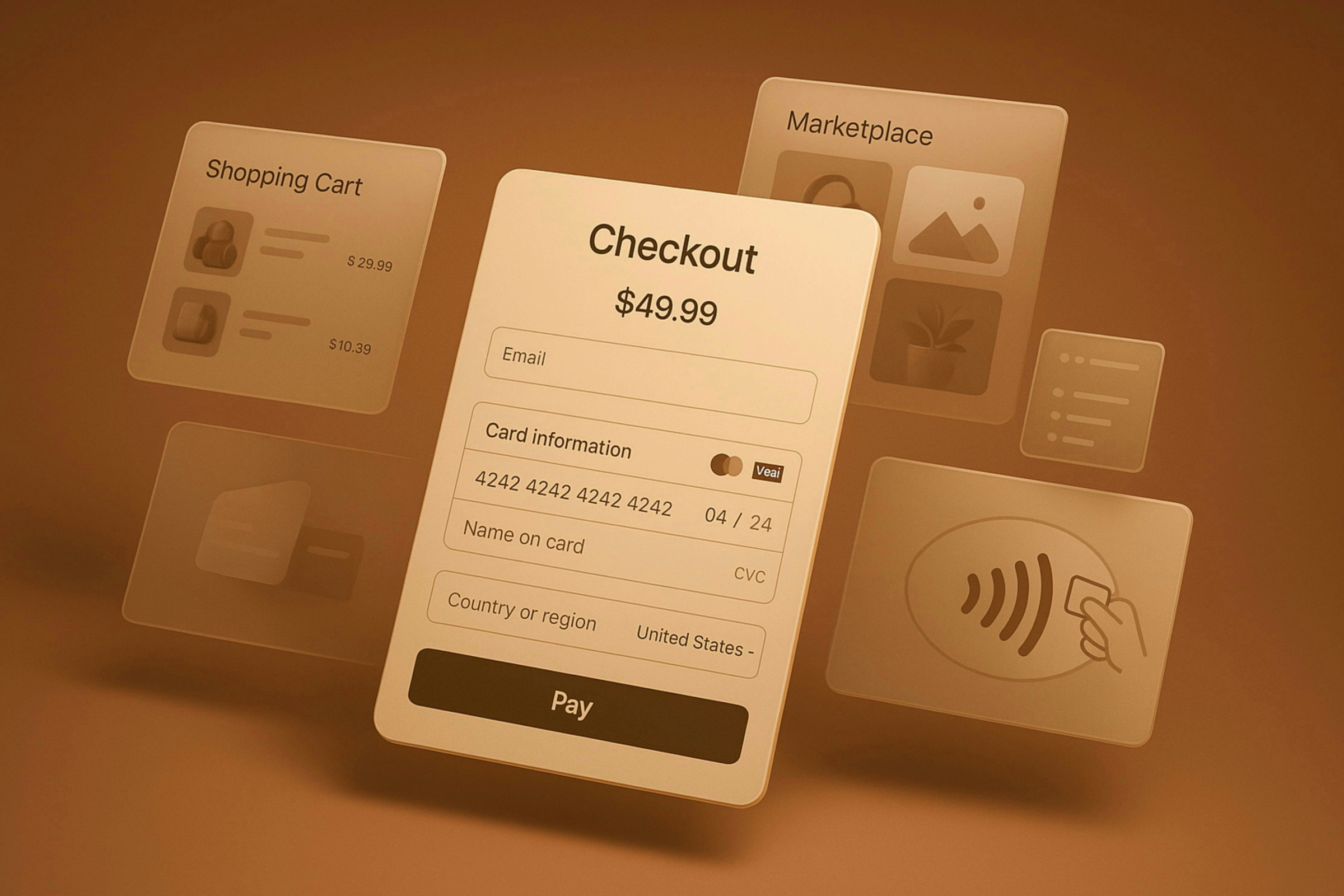Why Your Store Doesn’t Feel Trustworthy (And How to Fix It)
It’s easy to trust your own store. What’s hard is seeing what’s turning customers away.
You spent weeks building your store. You picked the colors, the logo, the photos, and the layout. To you, everything makes sense.
But the data tells a different story: on average, 97% of visitors leave without buying anything.
Why?
It all comes down to how people build trust.
Why You Trust Your Store (But Your Customer Doesn’t)
There’s a psychological effect called the familiarity bias; the more you see something, the more you trust it. And when it comes to your store, this bias is even stronger. You built every piece of it.
But your customer didn’t. They land on your store for the first time and have just 3 to 5 seconds to decide whether to stay or bounce. And in that short time, all they see is what’s on the surface — your design, layout, copy, and overall feel.
The problem? Most stores communicate very little in that first contact.

What Makes a Visitor Trust a Store in the First Few Seconds
Before making any rational decision, the brain answers three subconscious questions:
- Is this safe?
- Is this real?
- Can I trust this?
Those questions are answered through feeling, not facts.
- A cluttered, slow, or broken design signals danger.
- A clean, responsive layout makes the user feel in control.
- A clear value proposition provides immediate clarity on what is being offered.
94% of first impressions are based on design, and it takes only 50 milliseconds for someone to form an opinion about your site.
How to Build Real Trust on Your Website: The 4 Core Pillars
Trust isn’t about good intentions; it’s about perception. And that perception is built through small, consistent signals across the customer journey.

1. Social Proof
Generic reviews don’t work anymore. Consumers are cautious, skeptical, and used to empty claims. Instead of “Great product! – Mike R.”, use something like:
“It arrived in 2 days. My daughter loved it, and I’ve already recommended it to 3 friends. Totally worth it!”
Your reviews need to feel real, because they are. Candid photos, specific comments, and short videos create an emotional bridge with the buyer.
What to include:
- Photo reviews from real customers
- Short videos showing the product in use
- Press mentions or social media tags
- Real customer counts or visible review numbers
Pro tip: Make sure your review app renders content in your page’s code. If Google can’t see it, you’re losing SEO, authority, and traffic potential.
2. Authority
Trust isn’t built on time alone — it’s built on signals of credibility that show your store is real, experienced, and taken seriously by others.
Here’s how to display that authority:
- Certifications and seals from trusted organizations
- Awards for your product, support, or innovation
- Collaborations or features from known brands or creators
- The founder’s story — who you are, why you built this, and what you stand for
- Success stories and genuine customer feedback
These elements help your visitor think, “If others trust this brand, maybe I can too.” Authority reduces friction and reassures people during that critical first visit.
3. Visual Consistency
Misaligned design doesn’t just look bad, it creates a sense of uncertainty. A cluttered layout or clashing color palette can signal disorganization or inexperience, even if the product is great.
Consistency builds flow and trust. That means:
- Use consistent fonts and sizing across all pages
- Stick to a cohesive color palette that reflects your brand
- Avoid information overload or noisy banners, simplicity wins
- Make sure your site performs flawlessly on mobile (most traffic comes from phones!)
- Invest in high-quality, original images, which show care and attention
Your design reflects your brand. Visual consistency silently communicates: “We know what we’re doing.”
4. Transparency
Transparent communication anticipates concerns and reveals the real people behind the brand, without trying to sound perfect.
If your store feels mysterious, robotic, or corporate, people will hesitate. But if they find honest answers, relatable language, and even a bit of your backstory, trust builds fast.
Be transparent by:
- Clearly displaying your shipping, return, and refund policies, and making them fair
- Showing visible contact options (email, form, WhatsApp, etc.)
- Writing in plain, human language — skip the jargon
- Sharing the origin of your products, your mission, and your “why”
Transparency removes friction and builds connection. People buy from brands they understand and trust.
Looking for More Guidance?
Igor Silva, our CEO, explains everything in detail in his latest YouTube video, from homepage clarity to checkout best practices.
How to Test If Your Store Feels Trustworthy
Need a quick diagnostic? Try this test:
- Record a screen video of your homepage on mobile
- Find someone who’s never seen your store, preferably outside your professional circle
- Play the video for exactly 10 seconds
- Ask them (without any context):
- What do you think this store sells?
- Would you buy from it? Why or why not?
- What stood out to you?
- Did anything bother you?
Their answers will expose blind spots you’ve probably never noticed. For extra insight, show them your store and two competitors and ask: “Which one feels more trustworthy?”
This simple exercise can uncover hidden perception gaps that cost you conversions.
Your Customer Is Suspicious by Default (And That Changes Everything)
Today’s shoppers have been burned before. They’ve bought from sketchy sites, received low-quality products, dealt with useless support, and fallen for scams.

That experience shapes their behavior. So when they land on your store, they’re already expecting something to go wrong. It’s your job to prove otherwise.
How to do that:
- Show real faces: founders, team, and happy customers
- Tell your story in an honest, personal way
- Show how your product is made, packaged, or shipped
- Build an “About” page that feels human, not corporate — share your journey, values, and even failures
- Use real reviews with natural, imperfect language. That’s what makes them believable.
Stores that feel human earn trust much faster.
Trust Checklist: What They Need to See in the First 10 Seconds
First 10 seconds — they’re scanning for:
- A clear value proposition (what you offer and who it’s for)
- Visible and relevant social proof
- Clean, responsive design
- Easy-to-follow layout and navigation
- Fast loading speed
Seconds 11 to 30 — now they’re evaluating:
- What makes your product different
- Whether the site feels safe and legit
- Info about pricing, shipping, and return policy
- Whether your story and messaging match what they’re seeing
Get this right, and you’ll earn the right to keep them browsing.
Common Mistakes That Kill Trust Instantly
Some mistakes are subtle but deadly. They don’t trigger complaints; they just silently drive people away.
- Poor mobile experience: Over 70% of Shopify traffic is mobile. A broken layout means instant bounce.
- Low-quality or generic product images: Even great products can look sketchy with bad photos.
- Hidden or unclear pricing: If they have to search for the price, trust drops.
- No clarity around shipping or returns: These are basic assurances. Without them, people assume risk.
- Confusing checkout with unexpected steps or surprise fees — this breaks the sense of control.
- No visible contact info or human presence — anonymity creates doubt. “Who do I talk to if something goes wrong?”\n\nThese aren’t just UX issues. They’re trust killers. And your competitors are always just two clicks away.
Final Thoughts
Trust isn’t something you declare — it’s something your customer feels. And that feeling is built in seconds, based on what they see, how easily they understand your offer, and whether your store feels real and reliable.
That’s why improving trust starts by shifting your perspective. You may love how your store looks, but it’s the visitor’s experience that decides whether they stay or leave. Testing and refining with feedback, data, and proven CRO principles is what turns a good store into a high-performing one.




.jpg)



